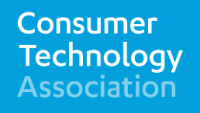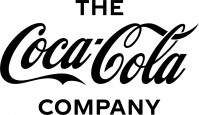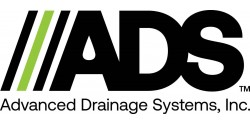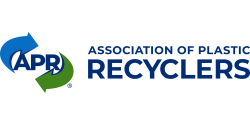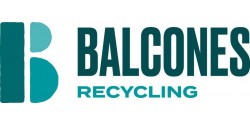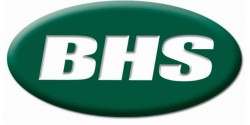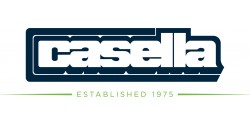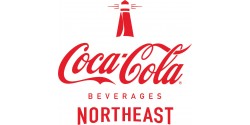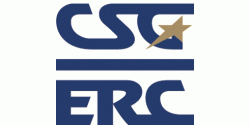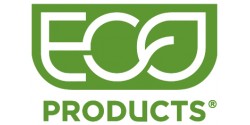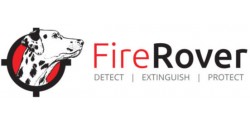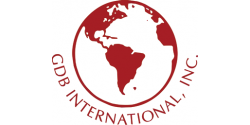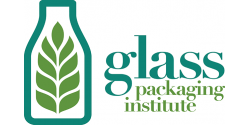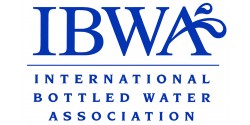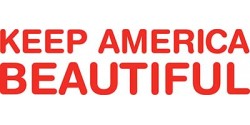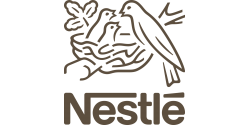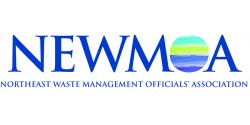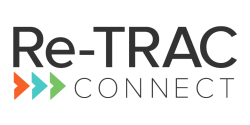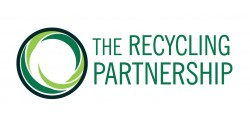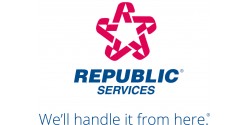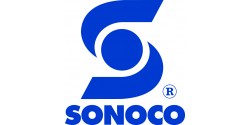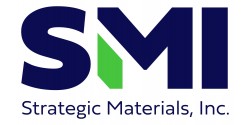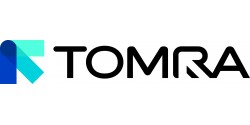January 2018
New & Renewing Memberships
Renewing Distinguished Benefactor
Renewing Sustaining Members
New Supporting Member
Renewing Supporting Members
NERC News
- C&D Materials Management & Markets in the Northeast - Webinar January 17
- Preliminary Agenda for NERC’s Spring Workshop—Markets or Bust—Now Available
- NERC Receives Contract to Continue Work with Bennington County, Vermont
- NERC Blog Worth Repeating - A Seventh Resource
Newly Posted
State Updates
MASSACHUSETTS
NEW YORK
Advisory Member News
- New Staff Joins MSW Consultants Consulting & Marketing Team
- APR Announces Recycling Demand Champion Campaign
- New York Organics Summit - Save the Date
- NEWMOA’s MSW Interstate Flow Presentation Posted
Of General Interest
NEW & renewing memberships
Membership is key to NERC's regional and national commitment to sustainable materials management. We are delighted to welcome renewing Distinguished Benefactor - the Consumer Technology Association (CTA), as well as renewing Sustaining Members - Casella Resource Solutions, Dart, International Bottled Water Association (IBWA), and TOMRA. We are also pleased to welcome our newest Supporting Member - the Container Recycling Institute, and renewing Supporting Members the Can Manufacturers Institute and Centre County Recycling & Refuse Authority, Pennsylvania.
To see a complete listing of NERC's Members and Supporters, as well as the benefits of membership, visit the NERC Advisory Membership web page.
The broad spectrum of interests represented by NERC's Advisory Members, Individual Supporters, and Board Members and their willingness to participate significantly contribute to the unique and important role that NERC plays in recycling in the region.
For more information, contact Lynn Rubinstein, Executive Director.
nerc news
C&D Materials Management & Markets in the Northeast - Webinar
Co-sponsored by: The Northeast Recycling Council (NERC) and the Northeast Waste Management Official’s Association (NEWMOA)
C&D materials are generated in new construction, remodeling, deconstruction and demolition. Common components of new construction in the U.S. include: wood; concrete/masonry; wallboard; metal; corrugated cardboard; bottles and cans; and trash. Demolition debris includes: concrete; wood; trash; scrap iron; asphalt; brick; and roofing. There is an increased emphasis on the processing and reuse of C&D materials. Many of these materials can be recycled and made into new products — clean, untreated wood can be made into new wood products (i.e., furniture, and wood chips and mulch for landscaping purposes); gypsum wallboard can be ground into a gypsum powder that is then manufactured into new plasterboard or applied as a soil amendment; and asphalt shingles can be recycled into cold patch, new shingles, or hot mix asphalt.
This joint NEWMOA and NERC webinar will include presentations on:
- The results of NEWMOA’s recently released analysis of data collected by the environmental agencies in Connecticut, Maine, Massachusetts, New Hampshire, New Jersey, New York, Rhode Island, and Vermont on architectural C & D materials disposal, processing, and recovery for reuse and recycling.
- The results of a Massachusetts Department of Environmental Protection (MassDEP) funded study that evaluated the current and future status of construction and demolition (C&D) debris management in Massachusetts, and identified and recommend potential opportunities for the diversion of a greater proportion of recyclable materials to recycling markets. NERC administered and contracted with DSM Environmental Services (DSM) to conduct the project. MassDEP has established a goal of diverting 50 percent of C&D materials from disposal, but in recent years the actual diversion rate has plateaued at around 30 percent. The primary objective of the analysis undertaken by DSM was to first assess incoming and outgoing materials at Massachusetts C&D processors and handling facilities, and to determine what the opportunities and constraints are to increase materials diversion beyond 30 percent.
Presenters will be:
- Jennifer Griffith, NEWMOA
- Natalie Starr, DSM Environmental
- Ted Siegler, DSM Environmental
Preliminary Agenda for NERC’s Spring Workshop—Markets or Bust—Now Available

NERC’s Spring Workshop—Markets or Bust—will be held on April 3rd at the Sheraton Baltimore Washington Airport Hotel in Linthicum, Maryland. The Workshop will begin with Myles Cohen, President of Pratt Recycling and President of the Paper Stock Industries, presenting the keynote address about the state of recycling markets and saving recycling markets.
The Workshop is intended for young and mature professionals who are interested in understanding the issues relevant to recycling markets and recycling market development. Other presentations and discussions to be held at the Workshop, include:
- History of recycling markets
- Market development tools
- Paper, plastics, glass, and organics markets and market development mock scenarios
For more details about session times and speakers, go to the Preliminary Agenda. The Workshop registration will be available in early January.
NERC would like to recognize and thank the Agenda Planning Committee for their assistance with developing the Workshop agenda.
Workshop Date: April 3, 2018
Contact Mary Ann Remolador, NERC’s Assistant Director and Event Organizer, if you have any questions related to the Workshop.
NERC Receives Contract to Continue Work with Bennington County, Vermont
In April 2017 NERC began working with the Bennington County Regional Commission (BCRC) to provide training, technical assistance, and outreach for the Bennington County Solid Waste Alliance and its 13 member towns located in Southwest Vermont. NERC will implement programs described in the Bennington County Solid Waste Implementation Plan adopted by the Alliance in 2015 to satisfy the standards required by Vermont’s Universal Recycling Law for outreach to schools, businesses and institutions.
Through this yearlong contract NERC will survey all schools within the Alliance on the current waste reduction, recycling, food waste management and HHW programs. Technical assistance in materials management will also be provided by NERC staff to at least four schools, including working with the schools to adopt ongoing sustainability measures, integrated into school waste reduction teams or clubs.
NERC will interview 100 businesses to gather information about their current source reduction, recycling, composting, public space recycling programs and the volume of material generated at each business. In addition, NERC will conduct on-site waste assessments and recycling surveys and provide direct technical assistance to at least 40 businesses, including restaurants and other food waste generators. In addition, NERC will be responsible for organizing one workshop for businesses/institutions on waste reduction, recycling (including requirements for public space recycling), organics hierarchy, and other materials management issues.
NERC will also provide outreach and technical assistance to special events in the region for improving recycling and implementing food waste diversion, as well as assist the Alliance in other ways as needed.
NERC Blog Worth Repeating - A Seventh Resource
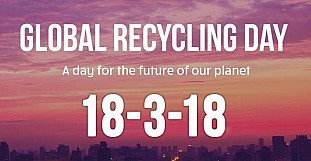 The Bureau of International Recycling (BIR) is organizing the first ever Global Recycling Day, scheduled for March 18, 2018. The goal of this global event is to raise awareness of the importance of recycling. BIR is not widely known in the United States, but it is the only global recycling industry association. The organization represents around 800 companies and 35 affiliated national recycling federations from 70 countries.
The Bureau of International Recycling (BIR) is organizing the first ever Global Recycling Day, scheduled for March 18, 2018. The goal of this global event is to raise awareness of the importance of recycling. BIR is not widely known in the United States, but it is the only global recycling industry association. The organization represents around 800 companies and 35 affiliated national recycling federations from 70 countries.
In advance of Global Recycling Day, BIR produced “Recycling: The Seventh Resource Manifesto.” According to the report’s authors, “We have woken up to the idea that we need to use waste as a resource if we want to save the world from drowning in it.” Nonetheless, it is painfully obvious that in the United States—and, as the authors note, around the world—recycling has failed to gain universal support and participation.
Global Recycling Day is being launched by BIR to build on growing interest in the Circular Economy and related concepts. To recognize the importance of recycling for the world’s economies and resource conservation, global, national, regional and local events are being organized; as the authors note, the goal is to “create a positive image of recycling to the broader public as well as government authorities.”
BIR is asking people around the world to look at the goods and materials we use and discard every day and to rethink the word “waste”. Water, air, oil, natural gas, coal, and minerals are the world’s most important resources. These six resources provide our energy, consumer goods, clothing, food production, transportation, and more; in short, the very things which humans depend upon for their sustenance and survival.
These core resources are finite and being used up at a rapid pace, without giving thought to what will replace them. Moreover, an unsustainable amount of these resources ends up in landfills or incinerators around the world. According to BIR, the world’s population disposes of 2.12 billion tons of waste each year.
“The Seventh Resource”–metals, textiles, paper, plastics and other recycled materials—can be used over and over, some of them indefinitely. Using recyclable materials in manufacturing of course reduces our reliance on virgin materials. Currently, the Seventh Resource supplies 40% of the world’s raw material needs. But many recyclables, in particular plastics, are recycled at far lower rates; 91% of plastic manufactured isn’t recycled.
The use of recycled materials in manufacturing reduces pollution associated with the manufacture of goods using virgin resources. According to BIR, use of the Seventh Resource saves more than 700 million tonnes in CO2 emissions (771 million US tons) annually.
 Recycling is also beneficial for local economies. According to BIR, around 1.6 million people worldwide are employed in processing recyclables. And in the next 10 years, the annual contribution of the recycling industry to the global GDP is projected to exceed $400 billion.
Recycling is also beneficial for local economies. According to BIR, around 1.6 million people worldwide are employed in processing recyclables. And in the next 10 years, the annual contribution of the recycling industry to the global GDP is projected to exceed $400 billion.
The Manifesto asks the world’s citizens and policy makers to recognize the true economic and environmental value of recyclables. We must rethink what we waste and elevate recycling to an issue of global importance.
BIR outlines seven challenges for world leaders in order for them to view recyclables as the precious Seventh Resource:
- Implement and strengthen international agreements that promote recycling, and negotiate new ones as needed.
- Support and promote the sustainable trade of recyclable materials to ecologically sound companies across the globe.
- Educate, from the grass roots up, the public on the critical necessity of recycling.
- Agree to a common language of recycling (same definitions, same messages).
- Make recycling a community issue, supporting initiatives which help households and businesses provide Seventh Resource materials for repurposing.
- Work with the industry to encourage ‘design for recycling’ in the reuse of materials – reducing waste and integrating ‘end-of-life’ functionality at the design stage.
- Support innovation, research and initiatives that foster better recycling practices.
BIR also sets forth seven key questions for the world’s consumers about their own use of the Seventh Resource:
- Do I dispose of everything I have used (from plastic bottles to refrigerators to cars) properly, so it can be recycled?
- Do I know my municipality’s policies on recycling and do I follow them?
- Do I know what happens to my recyclables once they are taken away by my local municipality?
- Do I, my family and my friends, mend, repair and reuse in order to sustain the usefulness of the items around us for as long as possible?
- Am I committed to producing as little waste as I can?
- Do I know how, and do the brands that I buy make it easy for me, to make the right ‘recycling friendly’ purchasing decisions?
- Am I sufficiently aware of my government’s recycling legislation, or should I be demanding more?
The message of Global Recycling Day: if we want to retain the earth’s natural resources and ensure the future of our planet…the time for change is now.
By Athena Lee Bradley
Source: Recycling: The Seventh Resource Manifesto
To support Global Recycling Day:
- Learn about the recycling industry globally and locally through local recycling offices, NERC’s website, and other recycling organizations.
- Sign the Global Recycling Day petition to show the UN and world leaders the concrete steps that are needed to make recycling a truly global concern.
- Join in Global Recycling Day on 18 March, and share good practice on social channels across the globe.
Newly Posted
Most Recent NERC Board of Directors Meeting Minutes
The minutes from the November NERC Board of Directors meeting are now available.
State UpdatesMASSACHUSETTS
MassDEP’s Recycling IQ Kit Goes Bigger & Bolder
The first year of MassDEP’s Recycling IQ Kit technical assistance program has come to an end, and the results are stunning. The Recycling IQ Kit was designed to provide steps, tools, and resources to help improve the quality of residential recycling programs. The toolkit includes:
- Guidance for engaging with a community’s MRF and hauler
- Instructions and tools for targeted messages
- Tools for tracking and reporting results
- Customizable artwork for education and outreach
- Resources for implementation of direct curbside/drop-off feedback
This year, five curbside communities (Abington, Dartmouth, Lynn, New Bedford, and Newburyport) and one drop-off community (Groton) took the plunge, and began implementing the IQ Kit’s education and enforcement strategies. The curbside communities targeted their two most contaminated routes as determined by their hauler and/or their recycling enforcement coordinators. Each curbside community formed teams of inspectors to tip recycling cart lids, leave “oops” tags and reject contaminated carts on recycling day. (Oops tags identify why the cart was being rejected and list acceptable materials). In addition to these “interventions” the communities also spread the word about the need for cleaner recycling via mailers, press releases, social media, and local signage (a-frames, DPW truck signage, billboards, etc.). The drop-off community revamped and simplified their facility’s signage with the help of The Recycling Partnership’s graphics team – and it looks amazing.
Communities received $7,500 to $15,000 in DEP funds to purchase collateral material and/or hire temporary inspection staff. They also received approximately 80 hours of assistance from their MassDEP Municipal Assistance Coordinator for planning and implementation. The Recycling Partnership provided critical support at kick-off meetings, and with trouble-shooting, and design work.
All five curbside communities reported a reduction in contaminated recycling carts as measured by the number of “oops” tags left over eight interventions. The City of Lynn, for example, targeted a densely populated, predominantly multi-family area. Their team tagged 981 recycling carts out of 4,869 households in the first intervention. The team returned to the same households for eight consecutive collection cycles. On the last intervention, they rejected only 279 recycling carts – that’s a 71.6% reduction! The City of Newburyport targeted a more suburban area and saw a 50% tagging rate reduction over six weeks of interventions. As Christin Walth from Newburyport reported, the binary data can only show how many carts were cleaned up. They can’t show the value of face-to-face interactions with residents and how many wishful recyclers she “converted” to clean recyclers through those interactions.
MassDEP has been working with The Recycling Partnership since 2016 to develop and test the IQ Kit which is available through DEP’s website. Additional artwork and resources will be added based on the insights and experiences of the amazing recycling coordinators who were brave enough to be early adopters. MassDEP thanks all six communities for their efforts. We are excited to announce that this cutting-edge toolkit will be updated by mid-January 2018 and that we are increasing the Recycling IQ Kit grant funds to up to $40,000 per community.
For more information contact Janice Pare at MassDEP.
NEW YORK
520 Million Pounds of Electronics Waste Collected & Diverted from Landfills
State Department of Environmental Conservation (DEC) Commissioner Basil Seggos has announced that the New York State Electronic Equipment Recycling and Reuse Act has driven the collection and recycling of more than 520 million pounds—or 260,000 tons—of electronic waste (e-waste) from 2011 to 2016. The announcement was highlighted in DEC’s second Electronic Waste Recycling Report, which documents e-waste recycling from 2013 to 2015, and outlines the strengths and challenges of the State’s e-waste recycling program.
Commissioner Seggos said, "Over the first six years of the program, New York State has successfully diverted hundreds of millions of pounds of e-waste destined for landfills and combustion facilities to e-waste recyclers for reuse and recycling, helping conserve valuable natural resources. The e-waste report will help DEC improve New York's strong e-waste recycling program, and the documented progress of this comprehensive product stewardship program is yet another example of Governor Cuomo's commitment to protecting our environment."
The e-waste recycling report for 2013-2015 builds on data in the first report and includes information on overall collection results, collection methods, recycling and reuse rates, stakeholder participation, fees and surcharges, as well as DEC’s compliance and enforcement efforts. The report also notes continued opportunities for business development, as a number of businesses have been launched or expanded as a result of the recycling/reuse of e-waste. The e-waste reports are available on DEC’s website.
From 2013 through 2015, electronic equipment manufacturers, consumers, and the state’s collection and recycling network successfully diverted nearly 300 million pounds of e-waste from the waste stream, which equates to a statewide collection rate averaging just over 5 pounds per capita.
DEC continues its efforts to address challenges associated with e-waste collection and recycling, particularly Cathode Ray Tube (CRT) televisions and monitors by working with municipalities, industry representatives, recyclers, and others to improve CRT collection and recycling. In addition, while striving for overall stakeholder compliance, DEC is working to improve manufacturers’ e-waste acceptance programs and continues public education and outreach, as well as enforcement, to ensure manufacturers are in compliance with the act’s requirements.
To help municipalities implement e-waste recycling over the short term, New York has made $3 million in grant funding from the State’s Environmental Protection Fund available to help municipalities across the state address the unintended costs associated with the collection and recycling of eligible e-waste. DEC is distributing nearly $1.2 million in grant funding to municipalities from the first two rounds of grant applications. Applications for the third and final round of available grant money are due to DEC by January 31, 2018, for expenses incurred between April 1 and December 31, 2017. Information regarding grants for municipal e-waste assistance can be found on the DEC website.
DEC is also developing draft regulations to clarify and strengthen provisions of the Electronic Equipment Recycling and Reuse Act and will release draft regulations early next year. Information about the proposed e-waste regulations will be available on DEC’s website and published in the Environmental Notice Bulletin.
Senator Tom O'Mara, Chairman of the Senate Environmental Conservation Committee, said, "Actions to better address the challenge of electronic waste are among the most important actions we've ever taken in New York government for the benefit of local economies, environments, and taxpayers.”
E-waste recycling has become extremely burdensome and costly for local governments and property taxpayers. Through the Environmental Protection Fund's emphasis on e-waste and by implementing new policies, programs, and regulatory reforms over the past several years, New York State has taken some very effective steps. I look forward to continue working with and urging Governor Cuomo and his administration on short- and long-term strategies which make important fiscal, economic, and environmental sense locally, regionally, and statewide."
With the holiday season underway, DEC reminds consumers that it is illegal to dispose of old, unwanted televisions and other electronic equipment in the trash. Examples of electronic equipment that must be recycled include computers, printers, monitors, televisions and tablets. Manufacturers are required to provide consumers with free and convenient e-waste recycling opportunities. These opportunities include mail back, local collection events, permanent collection drop-off locations and free at-home pickup, depending on the manufacturer’s program. For information on how and where to recycle your unwanted electronic waste and a complete list of covered electronic equipment, please visit the DEC website.
Advisory Member news
New Staff Joins MSW Consultants Consulting & Marketing Team
MSW Consultants made three new additions to its consulting and marketing team this year. Gisele Papadakis joined the Orlando office as the Director of Marketing, bringing 14+ years of experience from the Marketing and Design fields. She is responsible for MSW Consultants’ Marketing efforts, including web-design, social media marketing, graphic design, and proposal assemble. Charlie Pioli, a recent economics graduate from Northeastern University in Boston, MA, will assist in the operational fieldwork and data analysis for the firm’s various projects. He is passionate about waste reduction, and hopes to immerse himself in the resource management industry. Francesco Canepa is a recent economics graduate of the University of Central Florida with a passion for creating a positive impact on the environment. He previously spent nine months working as a research intern for WasteInsight™, MSW Consultants’ proprietary waste market database. In addition to supporting the firm’s consulting projects, he continues to lead the WasteInsight™ research team where he specializes in analyzing collection and disposal markets and contracts
APR Announces Recycling Demand Champion Campaign
The Association of Plastic Recyclers (APR), the leading international trade organization representing the plastics recycling industry, today announced a new program designed to expand market demand for recycled resins and improve plastic recycling in North America.
The APR Recycling Demand Champion Campaign focuses on increasing the use of polyolefin (PP or PE) post-consumer resin (PCR) in products generally referred to as “Work in Process” (WIP) items used in manufacturing. These are items used in everyday industrial applications, such as trash cans, pallets and tote boxes.
Demand Champions will sign a letter of intent to identify and use these WIPs in their facilities and require PCR content in them. As the program adds more participants, this will increase the demand for post-consumer recycled polyolefins.
“This program will drive demand for broad specification PCR produced from mixed residential plastics,” explains Liz Bedard, Director of the APR Rigid Plastic Recycling Program. “We have identified potential end markets for PCR in WIP durable goods such as crates, tote boxes, cans, pails, drums, trash or recycle bins, pallets, transport packaging and other items.”
“We know that there are increased environmental and economic benefits that come from recycling, but only if the materials recycled are made into new products or goods,” says Steve Alexander, President of APR. “Any company looking to catalyze those benefits can have a positive impact on the recycling system by directing those recycled resins into WIP goods that they are already purchasing on a regular basis.”
APR will work to expand participation in this program in partnership with brand owners, retailers, trade organizations, and other members of the recycling value chain. “We welcome any company to join the Demand Champion program,” adds Alexander.
“This program is open to anyone in the industry,” says Steve Sikra, Chair of the APR Rigids Committee and Associate Director for Solid Waste Management, The Procter & Gamble Company. “APR has the tools and connections to make the use of PCR straightforward in these WIP items. Let's use this as a platform to advance PCR use.”
Target Corp., Procter & Gamble, Keurig Green Mountain, Berry Global, and Clean Tech Inc. have all signed on as initial participants in the effort. Participating companies will regularly report progress updating their increased use of PCR in these areas, so positive impacts expanding and increasing the use of PCR may be anonymously aggregated and collectively reported.
“This program represents a critical step in expanding the use of PCR in the marketplace,” comments Steve Alexander, APR President. “It represents a major shift in the paradigm of major brands and manufacturers in identifying an expanded menu of options for the use of recycled material in a broader array of products.”
Target recently became the first major retail member of APR. This completes APR’s engagement across the full supply chain of materials: MRFs, equipment suppliers, recyclers, consumer brand companies, and retailers. Signing on to the APR Recycling Demand Champion Program builds on the five sustainable packaging goals that Target announced earlier this year.
Tom Busard, President of Clean Tech and former Chair of the APR Board, says “As both a container manufacturer and plastic recycler, we are uniquely positioned to understand the impact of this program from both the supply and demand side of the industry.”
“The initial participants represent a starting point. We began approaching companies in the past several weeks, and have been greatly encouraged by the response,” Alexander says. “Now that the program has been launched, recruitment efforts will accelerate, and we anticipate announcing a broader group of participants of companies of all sizes and industry focus at the Plastics Recycling Conference in February.”
For more information, contact Steve Alexander.
New York Organics Summit - Save the Date

NEWMOA’s MSW Interstate Flow Presentation Posted
NEWMOA has posted a Presentation on Municipal Solid Waste (MSW) Interstate Flow in the Northeast in 2014. This is the seventh presentation that NEWMOA’s Solid Waste Metrics Workgroup has produced on MSW disposal in the Northeast. It includes comparisons of 2014 MSW data with the data from prior studies. The purpose of this effort is to improve the quality of the states’ MSW data and to ensure that agencies have as much information as possible to monitor trends in waste disposal and interstate flow in the region.
Since NEWMOA began publishing these presentations in 2000, our Workgroup has found that all of the Northeast states export MSW to facilities in other NEWMOA states for disposal, and with the exception of Rhode Island and Vermont, disposal facilities in all of the NEWMOA states import MSW from other northeast states. Region-wide in 2014, 70 percent of the MSW generated and disposed remained in the state of origin for disposal, ranging from a high of 93 percent for Maine, Massachusetts, and New Hampshire and 91 percent for Connecticut, to a low of 60 percent for New York and 59 percent for New Jersey. In 2014, the quantity of MSW imports to Maine decreased significantly compared to prior years due to the closure of a waste-to-energy facility, and the quantity imported to Maine was similar to the quantity exported from Maine. In the past, facilities in Maine and New Hampshire have imported significantly more MSW than facilities exported from those states. More detail on these and other trends is contained in the presentation. Most MSW collection and disposal facilities in the northeast are owned and/or operated by private haulers and waste management companies, and MSW functions as a commodity with disposal markets that can vary year-to-year depending on tipping fees, transportation costs, and contract arrangements. With the exception of Rhode Island, state government agencies do not direct where disposal of MSW occurs.
NEWMOA is indebted to its members and the U.S. Environmental Protection Agency for their support of this project. We gratefully acknowledges the dedication and hard work of the following Solid Waste Metrics Workgroup members:
- Judy Belaval and Pete Brunelli, Connecticut Department of Energy and Environmental Protection
- Susan Alderson and Carole Cifrino, Maine Department of Environmental Protection
- Thomas Adamczyk, Tayo Akinbola, and Richard Blanchet, Massachusetts Department of Environmental Protection
- Laura Filiau and Pamela Hoyt-Denison, New Hampshire Department of Environmental Services
- Carlton Dudley, New Jersey Department of Environmental Protection
- Richard Clarkson, Jaime Lang, Vimal Minocha, and Gerard Wagner, New York State Department of Environmental Conservation
- Bob Schmidt, Rhode Island Department of Environmental Management
- Cathy Jamieson, Kasey Kathan, and Rebecca Webber, Vermont Department of Environmental Conservation
Jennifer Griffith led this effort on the NEWMOA staff, conducting the analysis and preparing the presentation, and we appreciate her many contributions to this effort. If you have any questions, contact her at jgriffith@newmoa.org.
Of General Interest
Recycling Terms for Beginners
Like any industry in the 21st Century, recycling has its share of unfamiliar terms and acronyms. With ongoing efforts to increase stagnant recycling rates, and an influx of younger workers into the recycling workforce, NERC has decided to launch a Recycling Terms for Beginners in its monthly Email Bulletin.
It makes sense to begin this feature with the acronym NERC. It stands for the Northeast Recycling Council; we’re a non-profit organization that, for 30 years, has developed programs emphasizing sustainable materials management in 11 states in Northeast United States and nationally.
Here are some other terms and acronyms that get heavy usage in the recycling industry:
- MRF: materials recovery facility. Material diverted from landfills and incinerators are often shipped to MRFs, where they are separated into discrete commodities.
- Single-stream recycling. In an effort to boost curbside recycling rates that have been stagnant for several years, many localities have made the switch from source-separated (in which recycled materials are separated at the curbside) to single-stream recycling, in which all designated recyclable materials are commingled, to be separated at MRFs. Some argue that single-stream helps increase recycling rates, while others contend that the process leads to contamination and lower quality recycled commodities.
- Recycling markets. The term refers to the markets for commodities recovered in the recycling process. A major market for many recycled commodities has been China; however, in recent years and months, the nation has reacted to contamination by restricting imports. Ideally, revenue from the sale of recycled commodities offsets much if not all of the cost of local recycling programs, but achieving this is largely aspirational, at least until recycling market development is more successful.
- Recycling market development. According to the Environmental Protection Agency (EPA), “Market development means fostering businesses that manufacture and market recycled-content products and strengthening consumer demand for those products.” Some cities and states have launched Recycling Market Development Zones (RMDZ), where new and established businesses that use recycled materials in manufacturing are located.
If you have requests for specific terms to be included in a future Bulletin, just let us know.
Fearless Predictions for 2018
2018 will be a challenging year for recyclers. Markets look more uncertain going into the new year than in any previous December since the crash of 2008. What to do about food waste will continue to be a hot topic in the press. Plastic bag “bans” will remain a hot item locally. Politically, waste and recycling will continue to be a low priority.
Paper recycling markets face tremendous uncertainty going into 2018. The Chinese ban on importing some recyclables, in particular “unsorted” (mixed?) paper, has caused turmoil. Aggravating the problem is that no one—including Chinese paper mills and perhaps the Chinese government—knows how the ban will play out. Meeting the announced 1 percent contamination rate for imported recyclables will be challenging. But the bigger question is: How it will be enforced? If MRFs can’t meet the government-imposed specification, Chinese mills will have to get their raw materials elsewhere or the government will turn a blind eye and allow “contaminated” paper in. At least that’s the logical response, but governments don’t always act logically.
Stories about our wasteful food habits continue to be popular. While the estimates of how much we make are all over the place, the problem is real and needs serious attention. The good news is that the food industry appears to be united in support of voluntary labels with “best if used by” to describe the quality of a food product and “use by” meaning “don’t eat” for perishable foods. We stand a good chance of those labels being widely adopted by the end of the year. Along with a robust consumer education program, they new will lead to less food waste to manage.
The bad news is that I don’t expect to see much progress in expanding that infrastructure next year. Building new composting and anaerobic digestion facilities can be derailed by NIMBY problems, usually involving odor or truck traffic. I will be happy if we discover better ways to manage either at these facilities.
Plastic bag “bans” will continue to receive a great deal of attention at the local level. Clearly plastic bag litter is an obnoxious visual and water debris problem. The bags also cause problems at MRFs when they wrap around processing equipment. At the same time, I don’t recall any stories of people wanting to stop using bags to carry their purchases.
I’m frustrated by the lack of good information about bags. I’ve seen little credible data about many we use by weight or number. Instead estimates are thrown around with abandon. How can we assess the problem or measure progress without the facts?
Even worse is when these laws are called plastic bag “bans” when they specifically exempt many single use plastic bags. I understand why garbage and pet waste bags are not banned. But if plastic bags are a problem, why exclude produce bags, dry cleaner bags and newspaper delivery bags?
State legislatures will continue to avoid significant waste or recycling legislation. This should be no surprise. RCRA and EPA’s Subtitle D regulations did an excellent job in eliminating open burning dumps. Garbage collection is inexpensive and highly dependable. Recycling is highly popular. State legislators respond to problems highlighted by the press and we aren’t one of them.
This doesn’t mean nothing will happen legislatively. Minor fixes will be made to existing state laws. As noted above, I would not be surprised if new food waste legislation is enacted, probably in northeastern or Mid-Atlantic states. Extended producer responsibility bills will be filed in a number of states. Some will attempt to fix problems with existing electronics recycling laws. Others will be aimed at paint or hard to recycle materials. Two states, California and Connecticut, may consider packaging legislation.
However, progress on extended producer laws has stalled over the last five years. Fixing the electronics laws is more challenging than anticipated. Legislators are showing less interest in laws for paint and other products. As for packaging and printed paper, most legislators understand the complexity involved in those proposals and question the need to rush forward.
So how will 2018 turn out? Ask me at the end of next year. But at the very least, I expect a roller coaster ride as the market situation sorts itself out.
Chaz Miller is a longtime veteran of the waste and recycling industry. He can be reached at chazmiller9@gmail.com


